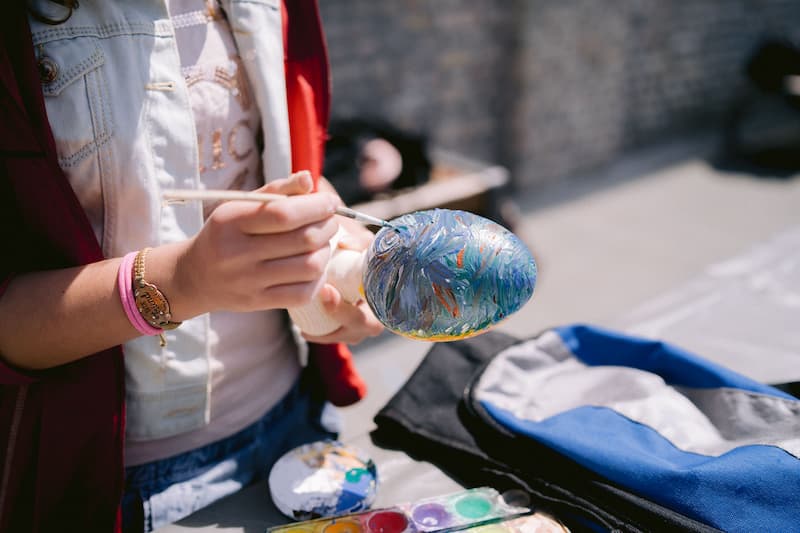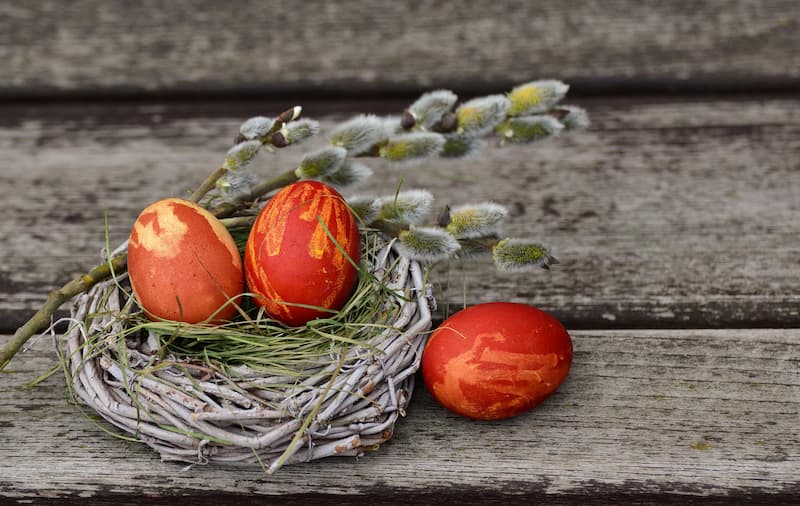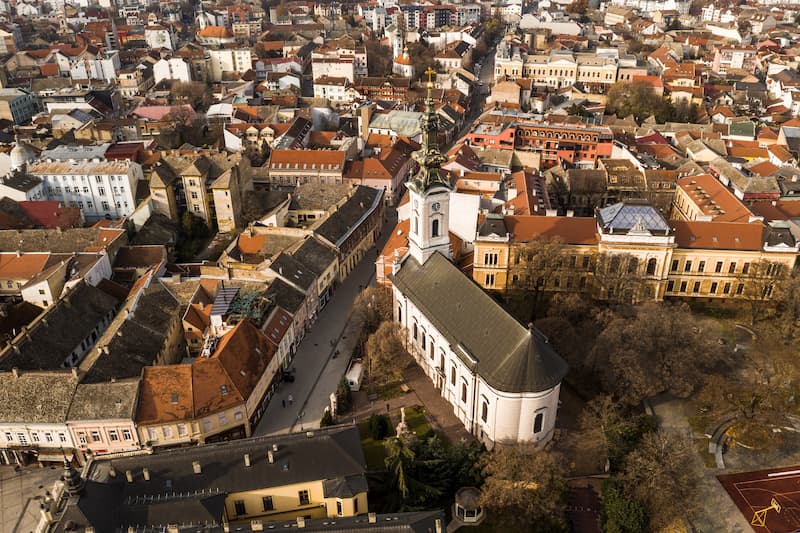We bring you a story about customs and traditions, about the symbolism of egg dyeing and how the saddest Christian holiday – Good Friday, and the happiest – Easter, are celebrated in Novi Sad and Vojvodina. Gather the family on a day of peace, fasting and prayer, and together colour the eggs red and save the first one as a guardian, so it brings prosperity to you and your loved ones.
Easter is the most joyous Christian holiday. We can say the holiday of holidays, which is celebrated in honour of Christ’s resurrection. The holiday is celebrated during the spring awakening of nature, after the winter equinox. Three terms are used in the Serbian language – Uskrs, Vaskrs and Voskres, and all three are correct. ‘Vaskrs’ is a Slavo-Serbian form, ‘Voskrsenije’ is a Russo-Slavic form, while ‘Uskrs’ is a term that originated among the people, adapting what was heard in churches.
Easter can be any of the 35 days after the vernal equinox. Easter Sunday is the Sunday in the week after the (Easter) full moon, after the vernal equinox (21 March). This means that the Orthodox Easter can be between 4 April and 8 May, and the Catholic Easter between 22 March and 25 April. The truth is, in fact, that the accuracy of this date has been lost, despite calendar reforms.

Easter is Preceded by Certain Holidays and Customs
Some of them are the Great Easter Fast, Mladenci, Lazarus Saturday (Vrbica), Palm Sunday (Cveti), Good Friday, etc. Before the beginning of the Great Easter Fast, the Serbs in Vojvodina celebrate Bele Poklade (proštene, završne, sirne poklade, proćke, mesopus, mesojeđe, fašange, maškare, mačkare). This White Week is the last week before Easter fasting.
The roots of poklade (carnival) are pagan and are related to marking the cult of the Sun and the arrival of spring, but over time they were accepted and adapted by the Christian church. Girls and boys disguise themselves and go from house to house with a lot of noise, making jokes, to the general joy of all present, and the host should give them treats. The younger members of the family should ‘take the lead’, quarrels and insults are forgiven and bonfires are lit in the squares around which everyone gathers with jokes and good humor, banish fear and enter the time of fasting.
Legends of Red Eggs
Egg dyeing was first mentioned in the 12th century, and in Vojvodina in the 16th century. The egg itself has symbolism of the renewal of nature and life. There are several legends about red eggs. According to one legend, when Jesus Christ was buried, his mother Mary left several white eggs on the grave. When Jesus resurrected on Sunday, the eggs on the tomb suddenly turned red. Another legend says that when Jesus was led to be crucified, the people threw stones at him, which turned into red eggs. Another legend says that when Mary went to Emperor Tiberius in Rome to explain Christ’s resurrection, she brought him a basket of eggs as a gift. The emperor did not believe that Jesus was resurrected and said that it would be as the eggs in a cloth change colour. Mary said Christ Is Risen and all the eggs turned red.
No matter what, the red colour is a symbol of joy, life and resurrection. Today, eggs are also dyed in other colours. The first egg painted red is called a custodian (keeper, watchman, guardian) and is kept in the house until next Easter. It is believed to have special power, protect the household and bring prosperity. Somewhere this egg was buried in a yard or field, to protect the crops. Eggs are painted on Good Friday in the morning. One of the famous egg painting techniques is the batik technique, wax-resist dyeing. Good Friday is considered a ‘difficult’ holiday, when all business is ceased, and even the church bells do not ring, but the priests beat on the board.

Easter Is Celebrated for Three Days
Easter is a day of joy, happiness and socializing among people. It is believed that for Easter you should get up early and you should not go to sleep before midnight, because we will be sleepy and lazy all year. In the morning, one would wash with water in which the first red-dyed egg had been soaked overnight, together with herbs (bigroot geranium, basil, dogwood, costmary) for the sake of health. Children rub red eggs on their cheeks to remain healthy and red throughout the year. The believers would go to church on a morning liturgy.
Every household prepares a rich festive lunch. Easter roast is usually pork or lambkin. Believers have an egg fight, because it is believed that breaking the roots of the egg symbolizes Christ’s resurrection. In some places, special ritual breads are also made, with a whole egg inserted, which is called kovržanjak in Vojvodina. On the Easter day, eggs and sweets are hidden around the house and yard, and the children search for them. In some villages of southern Banat, Bačka and Srem, candles were lit in the windows in the streets through which the procession passed.

Easter is celebrated for three days, during which Christians greet each other with ‘Christ Is Risen’ and respond with ‘Has Risen Indeed’. This way of greeting keeps until Salvation Day, the 40th day after Easter. Good Friday, Holy Saturday and Easter, which is always on a Sunday, are the most important days in the church calendar. All customs and actions performed on these holidays have a certain symbolism and magical meaning.
Author: Ljiljana Dragosavljević Savin, MA Historian
Photo: Photo: Jelena Ivanović, Vladimir Veličković







